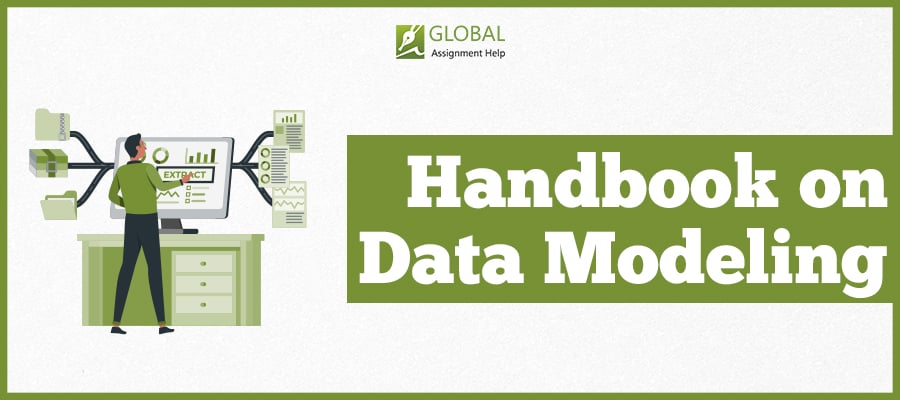Elena is working for an IT firm as a data analyst. Her primary work is to create a data model stored in a database. But one day she is working on her computer, and many files are popping up on her screen. She gets stressed, especially when her boss is annoying her because of the delay in her work. Being in this field makes her wonder if she has any idea about data modeling. Availing the benefit of it, she can take the data from the database management system and work on many files. So to make her understand here is what she should know what is data modeling.
All About Data Modeling & Its Types?
Data modeling is the process of making a diagram of the data. It means when you create a new or different database structure, the data analyst starts with a diagram of how the whole data will flow in the database. Its primary focus is to arrange the data into tables. It is a visual representation of either an entire information system or the sub-parts of the information technology that brings the connectivity between data points and structures. So if you feel there is confusion about what data modeling is, refer to this blog for a better understanding.
The main motive behind data modeling is to illustrate the data used and stored within the entire system. It showcases the relationships among the different data types. The data can be grouped and placed with systematic formats and attributes.
Data can be transformed among the various levels. The process starts by collecting information for the business's needs either from stakeholders or industrial employees. This gets translated into data structures to form a solid database design. You can say that it can be standard schemas and formal approaches. It provides a consistent and predictable way to manage the data resources within the enterprise or organization. In this scenario, entities are concerned with the information copied.
Types of Data Modeling
Data modeling has emerged simultaneously with the database management system. To go through with the model types it is necessary to do it because of the complexity of the businesses because their data storing capacity requirements have increased. To make it clear, these are the various model types:
-
Hierarchical Data Model
It portrays the various relationships in a dendroid format. In this model type, every record has an origin point that helps to locate one or more child tables. It originated in the information management system, especially in the banking sector. This database model is less effective than any other database model.
-
Relational Data Model
It is used in various relational databases, such as enterprise computing. It does not require an understanding of data storage. In this data, model segments are made through the use of tables. It is to employ structured query language ( SQL) for data management. It works more effectively if you are managing data integrity. It manages the data stored in the information system used for coding. Thus, if you feel that you cannot do it, you can take programming assignment help from experts.
-
Entity Relationship Model
It uses formal diagrams that showcase the relationship between the enterprise in a database. Data analysts or database architects can specify database design goals visually by using a variety of business-related tools.
-
Object-Oriented Data Model
In this type of data model, the objects involved are the abstractions of the enterprise workings. They are grouped in class hierarchies and have relative features. It incorporates tables but also complex data relationships. It is used in multimedia and hypertext databases.
-
Dimensional Data Model
Its emphasis is on efficient data storage management systems and dimensional models. It becomes easier to locate information for retrieval and reporting.
What Is a Data Model and Its Types?
When you have understood the meaning of data modeling, the next step is to know the data model. It is around the business's or organization's needs. When shareholders give rules and regulations, it acts as a blueprint of the new or old database management system. It is a roadmap that data analysts design or make a diagram that gives an in-depth understanding of the business operations.
Data models play a vital role in business planning, strategies, and the entire process of information technology. It is with distributors, industry partners, etc. Moreover, for example, if you have been given a data modeling project and you cannot write, don't worry go to the search engine and type your query, "Who can write my assignment? It will present the number of search results to choose from.
You may also like to read: learn new languages with reliable IT assignments
Type of Data Models
When you aspire to become a data scientist or analyst, you go through comprehensive stages of making a proper design model to store your data. It is like any other design process, but the only difference is the database and the information in it. It generally starts with abstraction and undoubtedly becomes more specific and in-depth. When it comes to data modeling types, it is made into three categories based on the degree of changes. The process begins with the conceptual model, the logical model, and then the final physical model.
-
Conceptual Models
It is also called domain models. It gives an overview of the whole system, the business rules and how well it is placed. It is to gather the primary project requirements. It includes the prerequisites essential to the business to constitute the data model, whether they are required features or constraints.
-
Logical Model
It is not a detailed model but provides information on concepts and relationships. It follows formal data modelling systems. It includes data attributes such as data types and the entity connection relationship. It does not involve any technical requirements. This model is used for proper procedural scenarios or data-oriented projects such as reporting systems, data warehouse development, etc.
-
Physical Model
It provides the framework to store the data in the database manually. It is the final design implemented as the relational database, which includes the tables that showcase the relationship between the entities and the essential elements used to build it. It involves the database management system, performance evaluation, and specific properties.
The Correct Data Modeling Process
It encourages stakeholders to examine the data processing and storage in detail. The data modelling techniques have various aspects that promote the symbols used to represent the data, how the database model works, and how business specifications are designed. To give more clarity, you can look at the workflow mentioned below:
-
Pinpoint the Entities
The data modeling process starts with checking the concepts given in set of databases. Each business should be kept separate from the others.
-
Identify the Essential Properties
Because each entity possesses one or more unique qualities known as attributes, each one is uniquely different from the others. For instance, the properties could include first name, last name, phone number, etc. If the business is named a customer. The properties could involve the street name, number, city, state, zip code, nation, etc. If another entity is referred as an address.
-
Relationships Between the Entities
This database model will specify the existing nature of relationships each entity has. For example, if each user or customer "lives at" an address, and the model itself explains to include an entity called "orders," then each of them will be shipped and billed to the address as well. It is governed by UML (Unified Modeling Language).
Students Also Read: What is Power BI Semantic Model
How Data Modeling Can Benefit You?
Data modeling makes it easy for data architects, data scientists, business analysts, and shareholders to see and understand the relationships between the data stored in the database. So to help you out, you can look through the benefits mentioned below:
- Reduce errors in database and software development
- Helps in improving the database management system working
- Improves the consistency in designing the system within the enterprise
- You can map the data with the business enterprise
- Increases the communication levels between developers and the business operations team
- Accelerates the database process at the conceptual, logical, and physical levels
Students Also Read: Top 15 Power BI Examples of Dashboards
Learn About the Data Modeling Tools
Various commercial and open-source computer-aided software engineering (CASE) solutions are used to present and analyze the data. Here are some examples:
-
Erwin Data Modeler
It is a data modeling tool that focuses on the integration definition of information modeling. It provides support to properly planned methodologies involving the dimensional approach.
-
Er/Studio
It is a database design software that gives the best competition to popular database management systems. It protects both dimensional and relational data modeling.
-
Enterprise Architect
It is a visual modeling tool that supports business databases and software databases and applications. It involves object-oriented language and standards.
-
Free Modeling Tools
It provides open-space solutions to the database management systems
Also Read: How to Share Power BI Report?
How can our experts help?
If you have any issues figuring out how you will be storing the data in the database management system you can reach our experts. If you work with the accrual plan and procedures, especially in the science and information technology field. Don't worry come to the website and remove your tensions and queries on what is data modeling.
To make it a little easier, you can check your content or any information from the database through the plagiarism checker tool.
Related Blog:-
Free Tools

Easy to Use Paraphrasing Tool to Simplify Complex Academic Writing
Check Now
Get Structured Outline by Professionals for Your Dissertation
Check Now
Effortlessly manage citations and references with our smart referencing tool
Check NowPrice Calculator
- Plagiarism
- Pricing
- Order Now
- Call Back
- Live Chat

Limited Time Offer
Exclusive Library Membership + Free 300$ Wallet Balance

Get $300 Now
Update your Number





























Thank you for submitting your comment on this blog. It is under approval. We will carefully review your submission and post it on the website.